- Joined
- Jan 2, 2014
- Messages
- 9,042
Yes please!At the lathe I use a "chuckmate" to swing the chuck into place. Hmmm, I don't see the chuckmate in a quick search - they might not be around anymore. A picture is warranted, I will follow up...
Yes please!At the lathe I use a "chuckmate" to swing the chuck into place. Hmmm, I don't see the chuckmate in a quick search - they might not be around anymore. A picture is warranted, I will follow up...
I’ve included some pictures of the small jib cranes I’ve built. The smaller one can lift 500-600 lbs. fully extended. The larger one can lift about 1,500 lbs. The larger one started out as an engine hoist, but little remains that hasn’t been modified or strengthened. One thing that I do recommend is that I used a hoist with a load brake and a large wheel which I made. This allows you to lift or lower a load without fiddling with a ratchet.I would like to get one of these some day. My engine hoist is difficult to maneuver and the legs stick out so far that it is not easy to get it close to the machines. This is probably way over your budget, but there might be something similar at a better price.
Counterbalance Lift Truck - Ruger Floor Cranes - Ruger Industries
The Counterbalance Vertical Lift's reverse base allows easier access to loads than traditional straddle leg style designs. Contact us for a free quote.www.rugerindustries.com
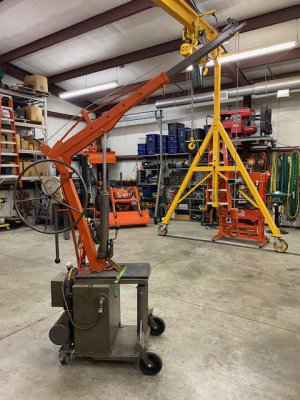
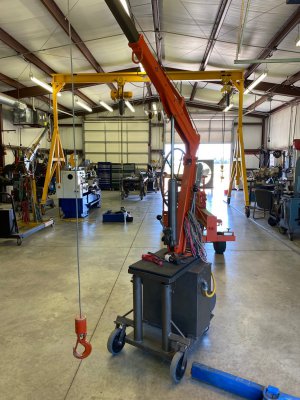
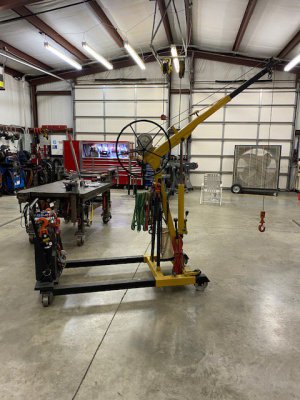
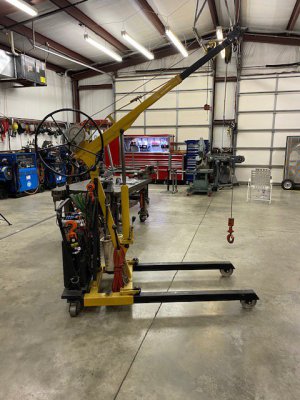
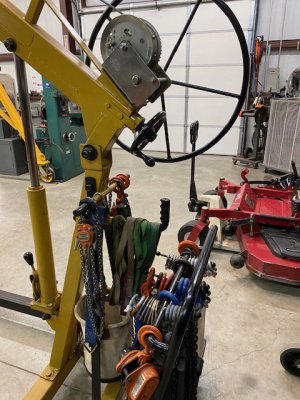
The comparison between a 10EE and Rivett would be a good idea for a post. Would it go in the Monarch forum?Pictures of the pacemaker and how do the Rivett and 10ee compare? That would be a great thread. Dave
Your first pictures is what I am looking to do with my engine hoist. I would like to make something I can unbolt from the current base and install on the counterbalance base and then back again when needed. Your description gives me some ideas on how to make it better, thank you!I’ve included some pictures of the small jib cranes I’ve built. The smaller one can lift 500-600 lbs. fully extended. The larger one can lift about 1,500 lbs. The larger one started out as an engine hoist, but little remains that hasn’t been modified or strengthened. One thing that I do recommend is that I used a hoist with a load brake and a large wheel which I made. This allows you to lift or lower a load without fiddling with a ratchet.
The yellow one also has a boom extension which is a hand wheel and an internal acme screw which means it can extend or retract the boom even when fully loaded. It has a 610 lb. counterweight which was a 3” chunk of steel I cut in half and welded together. It sits on a 1.5” thick piece of steel with a 1.5” back bulkhead.
The thing you have to be careful of is the more you design them to lift, the heavier they get and the harder they become to move. I’ve refined these two over many years and they seem to work well.
I also have a large gantry on tracks and a forklift. And even so, I find these two lifts very useful and versatile.
View attachment 429983 View attachment 429986 View attachment 429984 View attachment 429985 View attachment 429987
